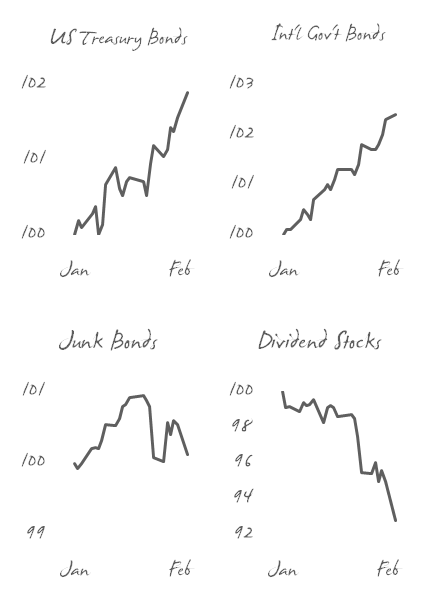Recent turbulence in global stock markets once again highlights the role safe bonds play in a portfolio.
Earlier this year, stocks fell more than 6% in a matter of weeks. In early February, investors withdrew record amounts from U.S. stock mutual funds, as fears spread over declining global growth, stubborn unemployment, and political and economic troubles in emerging markets. While media headlines suggested investors brace for a downturn, markets actually rebounded sharply.
We think investors shouldn’t be surprised by such bouts of stock market turbulence. After all, risk is the ever-present companion of return. Even during great periods for stocks, short-term declines are common. Since the lows of March 2009, for example, the U.S. stock market has surged nearly 175%. During that time, however, it has dropped more than 5% nearly twenty times. The average drop? About 8%.
It is during these inevitable periods of market stress when bonds—the primary role of which is safety and capital preservation—shine. As stocks dipped earlier this year, U.S. Treasury bond prices rose 1.5%, high-quality international government bonds gained more than 2%, and Treasury Inflation-Protected Securities (TIPS) returned 2.5%. Once again, safe bonds held up when they were supposed to; the same cannot be said of oft-hyped alternatives, such as “junk” bonds or dividend-paying stocks, as the graphic below illustrates[1].
As bond concerns intensify and experts in the media call for investors to steer clear of bonds, we’d remind folks that higher rates can actually be good news. For investors who replace individual bonds as they mature—or for those who own bond funds which do the same—higher rates mean new bonds provide more income. Over the long-haul, the effect of earning a higher rate of interest will more than compensate for the initial price decline.
In the meantime, investors who own safe bonds can sleep well knowing they continue to be the best counterweight to stock market turbulence.
________________________________________
[1] Performance from Jan 2 – Feb 3, 2014, as measured by: Vanguard Intermediate-Term Government Bond Index Fund (US Treasury Bonds); DFA Inflation-Protected Fund (US TIPS); DFA World ex-US Government Fixed Income Fund (Non-US Gov’t Bonds); SPDR Barclays High Yield Bond Fund (High-Yield Bonds); and Vanguard Dividend Appreciation Index Fund (Dividend Stocks).

